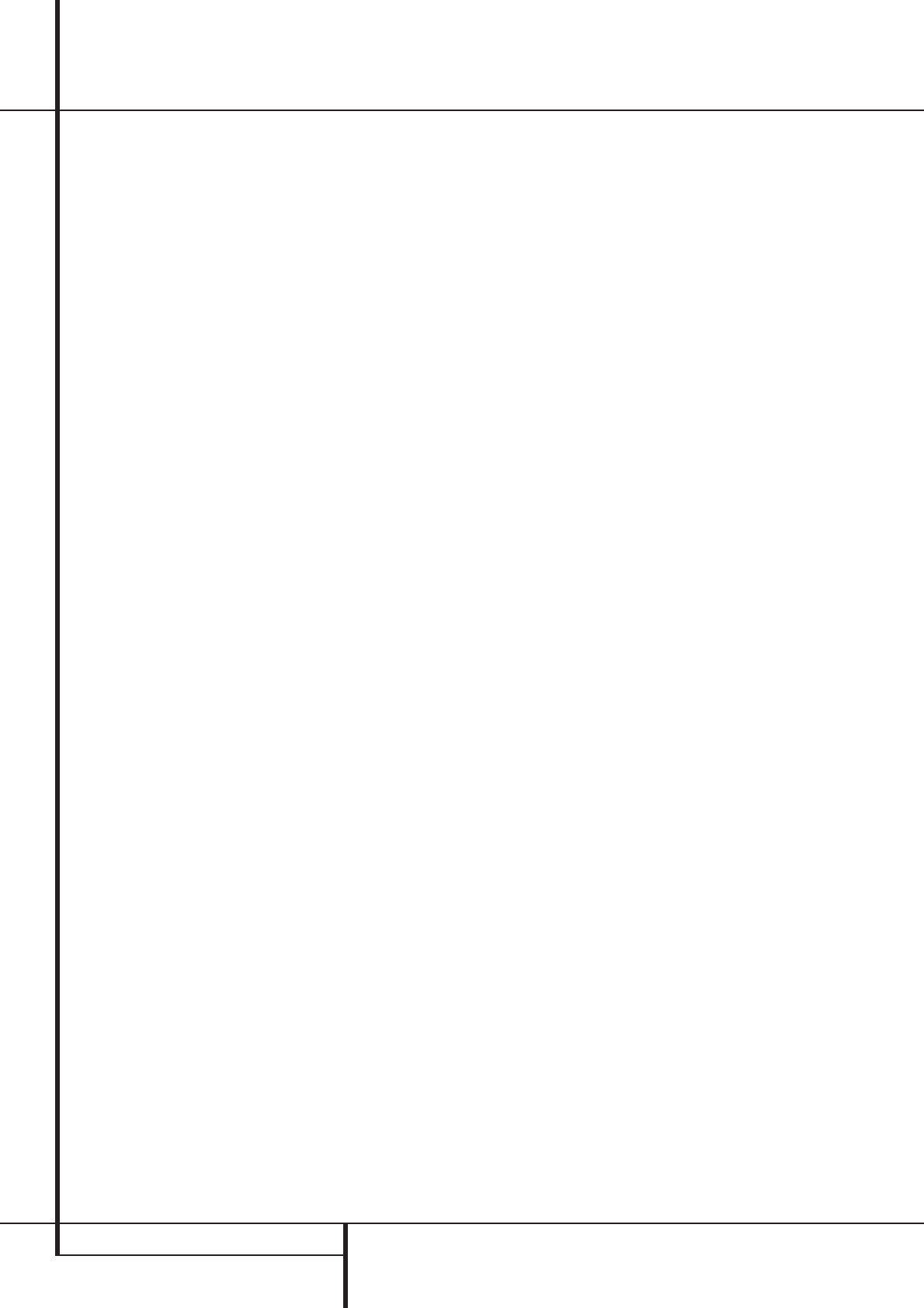
10 REAR PANEL CONNECTIONS
Rear Panel Connections
B
Front/Center Speaker Outputs: Connect
these outputs to the matching + or – terminals
on your front/center speakers.When making
speaker connections, always make certain to
maintain correct polarity by connecting the red
(+) terminals on the AVR 2000 to the red (+)
terminals on the speaker and the black (–) ter-
minals on the AVR 2000 to the black (–) termi-
nals on the speakers. (See page 14 for more
information on speaker polarity.)
C
Surround Speaker Outputs: Connect
these outputs to the matching + or – terminals
on your left and right surround speakers.When
making speaker connections always make cer-
tain to maintain correct polarity by connecting
the red (+) terminals on the AVR 2000 to the
red (+) terminals on the speakers and the black
(–) terminals on the AVR 2000 to the black (–)
terminals on the speakers. See page 14 for more
information on speaker polarity.
D
Switched AC Accessory Outlet:This out-
let may be used to power any device that you
wish to have turn on when the unit is turned on
with the System Power Control switch
2
.
E
Unswitched AC Accessory Outlet:This
outlet may be used to power any AC device. The
power will remain on at this outlet regardless of
whether the AVR 2000 is on or off (in Standby),
provided that the Main Power switch
1
is on.
Note: The total power consumption of all
devices connected to the accessory outlets
should not exceed 100 watts from the
Unswitched Outlet
E
and 50 W from the
Switched Outlet
D
.
F
AC Power Cord: Connect the AC plug to an
unswitched AC wall output.
G
Remote IR Output: This connection per-
mits the IR sensor in the receiver to serve other
remote controlled devices. Connect this jack to
the “IR IN” jack on Harman Kardon or other
compatible equipment.
H
Remote IR Input: If the AVR 2000’s front-
panel IR sensor is blocked due to cabinet doors
or other obstructions, an external IR sensor
may be used. Connect the output of the sensor
to this jack.
I
DVD Video Inputs: Connect these jacks to
the composite or S-Video output jacks on a DVD
player or other video source.
J
Video 1 Video Outputs: Connect these
jacks to the RECORD/INPUT composite or
S-Video jack on a VCR.
K
Video 3 Video Inputs: Connect these jacks
to the PLAY/OUT composite or S-Video jacks on
any video source.
L
Video 2 Video Inputs: Connect these jacks
to the PLAY/OUT composite or S-Video jacks on
a second VCR or other video source.
M
Video 2 Video Outputs: Connect these
jacks to the RECORD/INPUT composite or
S-Video jacks on a second VCR.
N
Video 1 Video Inputs: Connect these jacks
to the PLAY/OUT composite or S-Video jacks on
a VCR or other video source.
O
Optical Digital Inputs: Connect the optical
digital output from a DVD player, HDTV receiver,
LD player,MD player or CD player to these jacks.
The signal may be either a Dolby Digital signal, a
DTS signal or a standard PCM digital source.
P
Coaxial Digital Inputs: Connect the coax
digital output from a DVD player, HDTV receiver,
LD player, MD player or CD player to these jacks.
The signal may be either a Dolby Digital signal,
DTS signal or a standard PCM digital source. Do
not connect the RF digital output of an LD play-
er to these jacks.
Q
Video 3 Audio Inputs: Connect these jacks
to the PLAY/OUT audio jacks on any audio or
video source.
R
Video 2 Audio Inputs: Connect these jacks
to the PLAY/OUT audio jacks on a VCR or other
video source.
S
Video 2 Audio Outputs: Connect these
jacks to the RECORD/INPUT audio jacks on a
VCR or any Audio recorder.
Note: Either the Video or S-Video output of any
S-Video source must be connected to the AVR
2000, not both in parallel, otherwise the video
may be disturbed or its performance be adverse-
ly effected.


















